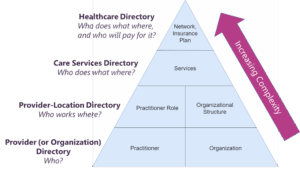 The following is a guest article by Ryan Cox, Co-Founder and Vice President at Acclaim Autism
The following is a guest article by Ryan Cox, Co-Founder and Vice President at Acclaim Autism
According to the Centers for Medicare & Medicaid Services, nearly two-thirds of U.S. autism therapy providers face waitlists exceeding four months. With one in thirty-one children diagnosed each year, demand is surging far beyond current capacity. This situation places unprecedented strain on provider organizations and delays critical care during a child’s most formative years.
Many providers struggle to deliver timely, high-quality care because their systems and processes are largely manual and outdated. According to the Department of Health and Human Services, key barriers to adopting healthcare IT in behavioral health settings include high costs, staffing shortages, and a lack of technical training. Meanwhile, these systems and processes contribute to moderate to severe burnout in our field.
We felt these pressures at Acclaim Autism. Acclaim provides in-home, community-based, and center-based applied behavior analysis therapy for children with autism to help them thrive. Our providers are highly trained and passionate, but old technology and manual processes had our team spending too much time processing paperwork, and not enough time with the community we serve.
Recently, we decided that enough was enough. We chose to cost-effectively transform our IT infrastructure to improve workflow processes, augment patient care, and reduce staff burnout. Here’s what we did and how you can transform your organization, too.
Transforming Patient Intake with Low-Code, Generative AI, and Robotic Process Automation
Acclaim Autism began its digitization journey by better organizing data and processing documents. Providers have traditionally processed documents manually, which naturally leads to data entry errors.
However, we soon discovered that legacy tools struggled with interpreting unstructured medical documents, which created even more work for staff. Team members had to review records carefully to ensure their accuracy, but this increased caregiver workload and reduced the time available for patient care. It also extended patient intake times by months in some cases, as document collection and data entry errors occurred.
As a new company, Acclaim lacked significant resources to invest in expensive systems that would take years to yield a return on investment. We needed a cost-effective way to implement intelligent automation to make patient intake more efficient and eliminate manual work.
We adopted cloud-native, low-code platforms that allowed us to rapidly build easy-to-use solutions that anyone can use. Low-code platforms use visual interfaces and templates to simplify application development, making it easier for non-developers to create and modify software. This approach enabled quick innovation and real-time response to operational challenges. It also improved patient workflows without having to invest in training or breaking our IT budget.
Our team used low-code tools to build prompts for generative AI models. The models automatically pulled essential data out of patient records, including birth dates, DSM-5 diagnosis codes, and provider information. This eliminated manual data entry errors during intake. We also implemented human-in-the-loop controls to ensure our staff could verify data extractions and maintain the fidelity of the information.
Then, we added Robotic Process Automation (RPA) tools to handle routine tasks like copying and pasting between systems and portals. RPA reduced errors and made the intake process smoother for staff and caregivers. Suddenly, tasks that once took hours, like manual claims submissions, took minutes.
Easing the Administrative Burden and Minimizing Staff Burnout
Many healthcare service employees have concerns over AI taking their jobs, but that was never our goal. We wanted to empower our team, not replace it. We have maintained our existing team, but have empowered them to enable services for more families with better tools.
The technology has removed much of the burden of manual data entry, reduced errors, and streamlined the flow of information across systems. Implementing AI and automation has significantly alleviated staff burnout and has helped our team members provide exceptional care to our children and their families.
Indeed, since implementing the new system, our organization has reduced patient intake times from six months to just three weeks. That’s an 83% reduction in the time between diagnosis and the start of treatment—an impressive feat in an industry that has traditionally struggled to expedite patient care.
Closing the Behavioral Health Care Gap
Hopefully, our experience offers valuable lessons for other providers seeking to adopt AI and intelligent automation responsibly and effectively. It does not have to be a massive lift or impossibly large expense.
Healthcare CIOs can start by targeting repetitive administrative tasks and duplicative tools or processes that drain time and resources. Then, look for human signals like rising burnout or staff frustration that often point to broken systems. These indicators can reveal where automation and process improvement will have the most tremendous impact. Finally, consider low-code platforms that make it easier to build and deploy solutions quickly and cost-effectively without heavy engineering support.
These best practices will help behavioral health providers close the growing gap between the need for mental health services and the system’s ability to deliver timely, effective care.




